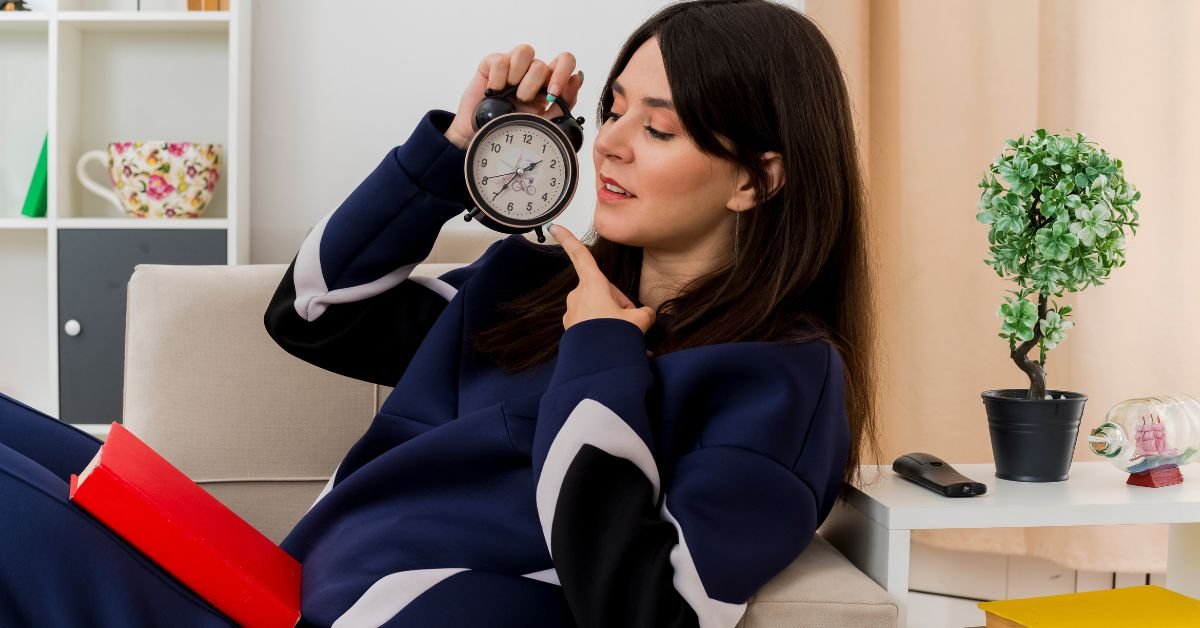How we get through our day-to-day travel reveals a great deal about our environment and stress level. If morning days are rushed, it may be due to crowding or disorganization with the spaces we travel through the most. Work days frequently bring into stark relief how much our environments aid with focus, and nights tell us if home spaces are facilitating relaxation. Observing these patterns enables us to discover simple ways of reducing stress and making our day-to-day travel more efficient.
Historical Note: Home efficiency went mainstream at the dawn of the 20th century with the notion of the “household work triangle,” linking the stove, sink, and refrigerator as a work- and time-saver. This design principle showed how space planning and stress were impacted through daytime routine. These ideas are still relevant today and are utilized throughout a lifetime as a continuing reminder that good design and organization can simplify routines and reduce sources of anxiety.
Morning Habits and Space
Morning routines often reveal how well a space is designed and organized. If your kitchen counters are crowded, making breakfast can feel stressful. If closets are overstuffed, finding clothes adds to the rush. These small details can create tension before the day even begins. By looking closely at your mornings, you can spot patterns that connect space and stress. Small improvements, like clearing counters or setting clothes out the night before, make mornings calmer and more efficient.
- Keep kitchen essentials in easy-to-reach spots
- Prepare outfits or bags the night before
- Create a drop zone for keys, wallets, or phones
When mornings run smoothly, stress is reduced, and the rest of the day feels lighter. Adjusting spaces to support routine tasks makes it easier to start the day with focus and energy. Morning habits are small clues about how your environment affects your overall wellbeing.
Workday Flow Patterns
- Identify where you spend the most time during the workday
- Notice if your space supports focus or creates distractions
- Track interruptions caused by clutter or poor layout
- Adjust spaces to balance productivity and comfort
Observation: A remote worker noticed they were constantly shifting between the kitchen table and couch. This lack of a clear workspace made it harder to stay focused. By setting up a small desk near natural light with minimal clutter, they immediately felt more productive and less stressed.
Workday routines highlight whether spaces are helping or hurting efficiency. Even simple adjustments, like better lighting or designated work zones, can improve concentration. Over time, these changes make daily tasks feel easier, lowering stress and boosting overall productivity.
Evening Routines at Home
Evening routines show whether your home is helping you relax or adding to your stress. If clutter builds up in living rooms or kitchens, it becomes harder to unwind. Families may find themselves arguing about chores or feeling too drained to enjoy time together.
Creating simple systems like baskets for toys, hooks for bags, or even rotating meal plans can make evenings smoother. Larger items or seasonal belongings can be placed in storage units at Bragg Boulevard Fayetteville to free up space at home, giving common areas a calmer feel. Even small steps can turn evenings into a time for recovery rather than chaos.
Research: Studies from the American Institute of Stress show that 54 percent of adults report clutter at home contributes directly to daily stress, while organized spaces are strongly linked with better relaxation and improved sleep quality.
By shaping spaces to support rest, evenings become a chance to recharge. Clear areas, dim lighting, and routines like tidying up before bed create an environment where stress is lowered, and the body can prepare for the next day with ease. Evening habits tell us how strongly space influences both mood and recovery.
Weekend Behaviors and Rest
Weekends highlight how people use space to recover and reset. Some prefer active weekends with sports or projects, while others focus on calm and rest. Organized spaces support both approaches. For example, outdoor gear stored neatly is easy to grab for adventures, while a tidy living room invites quiet relaxation. Both approaches have benefits, but disorganized areas create stress by making either option harder to enjoy.
Case study: A family found weekends overwhelming because they could never find sports gear for the kids. After creating a simple storage system and decluttering their garage, they spent less time searching and more time together.
The key difference between stressful and restful weekends often comes down to how well spaces support chosen activities. Organized environments help weekends feel refreshing instead of draining.
Links Between Space and Stress
A young couple described how their anxiety decreased once they redesigned their small apartment. Previously, dirty laundry filled the bedroom and paperwork covered the kitchen table. These chaotic spaces produced an overwhelming feel of daily life. With the guidance of an organizing coach, they established fundamental systems of a mail basket, clean-up days once a week, and special laundry bins. Within weeks, they felt fewer fights were occurring, sleep improved, and nights were less stressful.
Over 60 percent of respondents say that clutter actually increases their stress level throughout the day, research from professional organizers has determined.
Experts state that stress isn’t merely a result of external pressures of work but also of spaces one resides. A space that helps one relax and concentrate provides insulation against daily tribulations. Incremental space use changes as reflected through the couple show long-term gains towards home harmony as well as emotional health.
Final Reflections
Our daily habits reveal more than we realize about how space and stress are connected. By paying attention to the flow of routines, we see where clutter creates obstacles and where organization creates calm. Making even small adjustments to living and working areas has the power to reduce tension and increase energy. The real value lies in designing spaces that match daily rhythms. What your daily routines reveal about space and stress is the key to building balance, clarity, and peace of mind.
CLICK HERE FOR MORE BLOG POSTS











